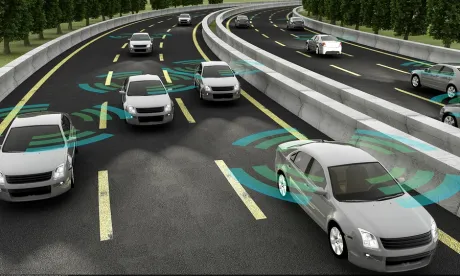Self-driving cars are here. And although these so-called autonomous vehicles (AVs) are expected to reduce the overall number of auto accidents significantly, some accidents are still statistically inevitable. This raises an important question for AV industry stakeholders: when human beings aren’t in the driver’s seat, what accident-compensation mechanisms should come into play?
Earlier this month, the Travelers Institute, a unit of the major auto insurer, issued a white paper on insurance for AVs, “Insuring Autonomy: How auto insurance can adapt to changing risks.” Though some have called AVs an existential threat to the auto insurance industry, the Travelers study sees opportunities. Among its recommendations: that the existing auto insurance infrastructure should be extended to AVs; that AV auto insurance should be mandatory; and that mandatory policy limits should be increased to account for more expensive technology in AVs. The Travelers study weighs auto insurance against the product liability regime as alternative accident compensation schemes and concludes that auto insurance is the preferred first-instance solution.
One of the advantages of the auto insurance regime that Travelers cites is that consumers are already familiar with the existing auto insurance infrastructure, including the basics of purchasing insurance for their cars and filing claims. Travelers also asserts that the auto insurance system generally works well as designed, to compensate victims for bodily injury and property damage in a relatively efficient manner while avoiding unnecessary litigation that the courts are ill-equipped to handle. It further points out that continuing to rely on a conventional auto insurance model will “help to ensure consistency during the long period in which AVs and driver-operated vehicles share the road.”
Tort liability, the report contends, is not well-structured to serve as a primary compensation solution. A product-liability-only compensation regime for auto accidents would force consumers into complex and lengthy litigation even for fender benders. For this reason, a product-liability-only compensation regime would be too costly in most instances for victims, the report concludes, and would likely result in under-compensation.
So if the Travelers study’s prediction is correct, we can expect to see traditional auto insurance products adapt to AVs and the corresponding legal and regulatory infrastructures adjust as well. But absent a legislative or regulatory sea change, the tort liability mechanism for allocating the costs of accidents is unlikely to disappear. Product liability litigation—both for vehicle manufacturers and for their component makers—still seems very much a live risk, even in the bright future of AVs, whether for insurers’ subrogation claims or for accident victims’ uninsured or underinsured losses.
Another recent study, “Strict Product Liability and the Internet of Things,” published by the Center for Democracy & Technology, focuses on how the tort system, and specifically strict product liability, would apply to the designers, manufacturers, and retailers of Internet of Things (IoT) products, including AVs. The paper addresses the challenges of figuring out fault and liability for harms caused by IoT products. One of its conclusions is that because of the complex supply chains for the design, manufacture, assembly, delivery, and sale of IoT products, answering the question “who is liable?” can be more difficult than for many non-digital products. The paper predicts that it may be relatively easier to identify whom the law should deem to be at fault and to allocate liability for IoT products in sectors where the Original Equipment Manufacturer (OEM)/Value-Added Reseller (VAR) model is well-established, such as in the automotive industry.
But this does not mean that managing risk for AVs will be any simpler than for products of the past. For IoT- and AV-related accidents, litigation seeking reallocation of loss through tort liability—whether lawsuits brought by creative plaintiffs’ lawyers seeking primary reallocation, or subrogation claims brought by auto insurers seeking secondary reallocation—must be expected. And the costs of that litigation can be expected to be high. As the CDT report observes, in the past it has sometimes taken many decades for the law to adapt to new technologies, both because it takes time for the costs and harms of the emerging technologies to become evident and for the causal links between particular technologies and resulting harms to be established. Establishing responsibility for AV-related accidents in particular cases can be expected to require highly sophisticated investigations into the roles played by specific components in the vehicle and by the algorithms buried within them. At least in the near term, therefore, we can expect AV-related product litigation to entail disputes over both the applicable legal rules and the nitty-gritty details of individual accidents.
Ensuring protection from liability insurance for that costly AV-related product liability litigation, in turn, may also require expert insurance coverage analysis, both at the underwriting stage and at the claim stage—particularly under current standard insurance offerings, which were not drafted with an eye to artificially intelligent products. Also requiring close scrutiny are the indemnity and insurance procurement clauses in vendor contracts that are designed to transfer or distribute product liability risks among various supply chain participants. Both insurance coverage and the risk-related provisions in vendor contracts are essential pieces in the enterprise risk management puzzle for IoT and AV industry stakeholders, and both warrant careful attention.




 />i
/>i

